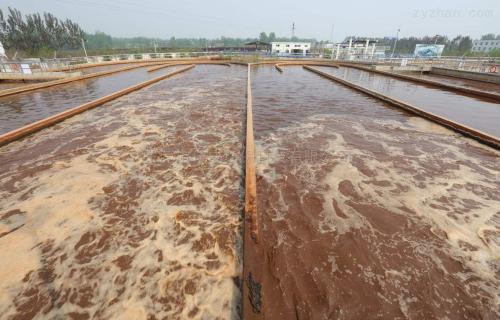Industrial wastewater refers to wastewater, sewage and waste liquid produced in industrial production processes, which contain industrial production materials, intermediate products and products that are lost with water, and pollutants produced during the production process, summarizing chemical industrial wastewater, printing and dyeing industrial wastewater. 15 kinds of industrial wastewater treatment processes such as paper industry wastewater, dye production wastewater, food industry wastewater and pesticide wastewater.
1. Characteristics and treatment process of desulfurization wastewater from coal-fired power plants
Characteristics of desulfurization wastewater from power plants:
Most desulfurization devices in power plants use flue gas limestone-gypsum wet desulfurization process. The process mainly consists of a limestone slurry preparation system, a gypsum dehydration system, and a desulfurization wastewater treatment system. The water in the slurry of the desulfurization device will be enriched with heavy metal elements and Cl- in the process of continuous circulation. On the one hand, the corrosion of the desulfurization equipment is accelerated, and on the other hand, the quality of the gypsum is affected, and the wastewater needs to be discharged in time.
Power plant desulfurization wastewater treatment process: desulfurization wastewater → waste water tank → wastewater pump → pH neutralization tank → settling tank → flocculation tank → clarifier → water tank → water pump → discharge standard
The desulfurization wastewater treatment system includes three parts: wastewater treatment, dosing and sludge treatment. The wastewater treatment system is mainly composed of waste water tank, triple tank, clarification tank, mud pump, water outlet tank, clean water pump, fan and dewatering machine. In addition to a large amount of Cl-, Mg2+, the impurities in the desulfurization wastewater include: fluoride, nitrite, etc.; heavy metal ions such as Cu2+, Hg2+, etc.; insoluble CaSO4 and fine dust. In order to meet the wastewater discharge standards, a corresponding wastewater treatment device is required.
2. Chemical industry wastewater
The chemical industry wastewater mainly comes from the production wastewater discharged from the petrochemical industry, the coal chemical industry, the acid and alkali industry, the fertilizer industry, the plastics industry, the pharmaceutical industry, the dye industry, and the rubber industry.
The main measures for the prevention and control of chemical wastewater pollution are: first, reform the production process and equipment, reduce pollutants, prevent wastewater discharge, comprehensive utilization and recycling;
The primary treatment mainly separates suspended solids, colloids, oil slicks or heavy oil in water. Water quality and water volume adjustment, natural sedimentation, floating and oil separation methods can be used.
The secondary treatment mainly removes the biodegradable organic solute and some colloids, reduces the biochemical oxygen demand and part of the chemical oxygen demand in the wastewater, and is usually treated by biological methods. A considerable amount of COD remains in the biologically treated wastewater, sometimes with a high color, smell, taste, or high environmental sanitation standards, and further purification is required by a three-stage treatment.
The tertiary treatment is mainly to remove organic pollutants and dissolved inorganic pollutants that are difficult to biodegrade in wastewater. Commonly used methods include activated carbon adsorption and ozone oxidation, and ion exchange and membrane separation techniques can also be used. Various chemical industry wastewaters can be selected according to different water quality, water quantity and post-treatment external drainage quality.



